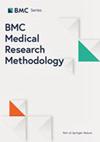在德国各地招募具有特定公民身份的人员参与健康访谈调查 GEDA Fokus:招募工作评估和未来研究建议
IF 3.9
3区 医学
Q1 HEALTH CARE SCIENCES & SERVICES
引用次数: 0
摘要
德国是仅次于美国的第二大移民国家。然而,在公共卫生监测和报告中,有自己或家族移民史的人在人口中所占比例并不高。为了弥补这一数据缺口,并对移民与健康进行差异化分析,我们对居住在德国各地的克罗地亚、意大利、波兰、叙利亚或土耳其籍成年人进行了健康访谈调查 GEDA Fokus。本文旨在评估招募工作对参与和样本组成的影响。这项横断面多语言调查的数据收集工作于 2021 年 11 月至 2022 年 5 月期间进行,采用了顺序混合模式设计,包括自填式网络和纸质问卷以及面对面和电话访谈。总样本(n = 33436;年龄范围为 18-79 岁)根据公民身份从 120 个主要抽样单位的居民登记册中随机抽取。本报告介绍了根据美国舆论研究协会得出的结果率、整个多阶段招募过程中的样本构成、调查模式的使用以及问卷语言。总体而言,共有 6038 人参与,回复率为 18.4%(范围:土耳其籍为 13.8%,叙利亚籍为 23.9%)。家访是答复率增幅最大的一次。在招募过程中,更多的女性、老年人以及教育和收入水平较低的参与者参与了调查。有身体健康问题和较差健康行为的人通常在较晚阶段参与调查,而有抑郁或焦虑症状的参与者通常在较早阶段参与调查。调查方式和问卷语言的使用因社会人口特征和移民相关特征而异,例如,50 岁及以上的参与者更多使用纸质问卷而非网络问卷,居住时间较短的参与者更多使用翻译问卷。包括家访和不同调查语言在内的多次联系尝试,以及提供不同的调查管理模式,提高了回复率,并很可能减少了非回复偏差。为了在公共卫生监测中充分代表和纳入多样化的人口,国家公共卫生机构应调整调查设计,以满足被认为难以调查的不同人口群体的需求,使他们能够参与调查。本文章由计算机程序翻译,如有差异,请以英文原文为准。
Recruiting people with selected citizenships for the health interview survey GEDA Fokus throughout Germany: evaluation of recruitment efforts and recommendations for future research
Germany is the second most common country of immigration after the US. However, people with own or familial history of migration are not represented proportionately to the population within public health monitoring and reporting. To bridge this data gap and enable differentiated analyses on migration and health, we conducted the health interview survey GEDA Fokus among adults with Croatian, Italian, Polish, Syrian, or Turkish citizenship living throughout Germany. The aim of this paper is to evaluate the effects of recruitment efforts regarding participation and sample composition. Data collection for this cross-sectional and multilingual survey took place between 11/2021 and 5/2022 utilizing a sequential mixed-mode design, including self-administered web- and paper-based questionnaires as well as face-to-face and telephone interviews. The gross sample (n = 33436; age range 18–79 years) was randomly drawn from the residents’ registers in 120 primary sampling units based on citizenship. Outcome rates according to the American Association for Public Opinion Research, the sample composition throughout the multistage recruitment process, utilization of survey modes, and questionnaire languages are presented. Overall, 6038 persons participated, which corresponded to a response rate of 18.4% (range: 13.8% for Turkish citizenship to 23.9% for Syrian citizenship). Home visits accounted for the largest single increase in response. During recruitment, more female, older, as well as participants with lower levels of education and income took part in the survey. People with physical health problems and less favourable health behaviour more often took part in the survey at a later stage, while participants with symptoms of depression or anxiety more often participated early. Utilization of survey modes and questionnaire languages differed by sociodemographic and migration-related characteristics, e.g. participants aged 50 years and above more often used paper- than web-based questionnaires and those with a shorter duration of residence more often used a translated questionnaire. Multiple contact attempts, including home visits and different survey languages, as well as offering different modes of survey administration, increased response rates and most likely reduced non-response bias. In order to adequately represent and include the diversifying population in public health monitoring, national public health institutes should tailor survey designs to meet the needs of different population groups considered hard to survey to enable their survey participation.
求助全文
通过发布文献求助,成功后即可免费获取论文全文。
去求助
来源期刊

BMC Medical Research Methodology
医学-卫生保健
CiteScore
6.50
自引率
2.50%
发文量
298
审稿时长
3-8 weeks
期刊介绍:
BMC Medical Research Methodology is an open access journal publishing original peer-reviewed research articles in methodological approaches to healthcare research. Articles on the methodology of epidemiological research, clinical trials and meta-analysis/systematic review are particularly encouraged, as are empirical studies of the associations between choice of methodology and study outcomes. BMC Medical Research Methodology does not aim to publish articles describing scientific methods or techniques: these should be directed to the BMC journal covering the relevant biomedical subject area.
 求助内容:
求助内容: 应助结果提醒方式:
应助结果提醒方式:


